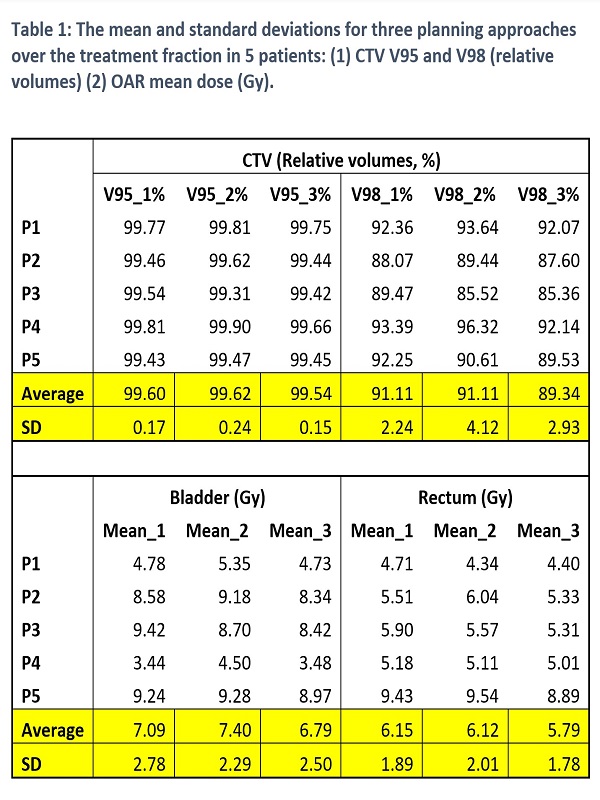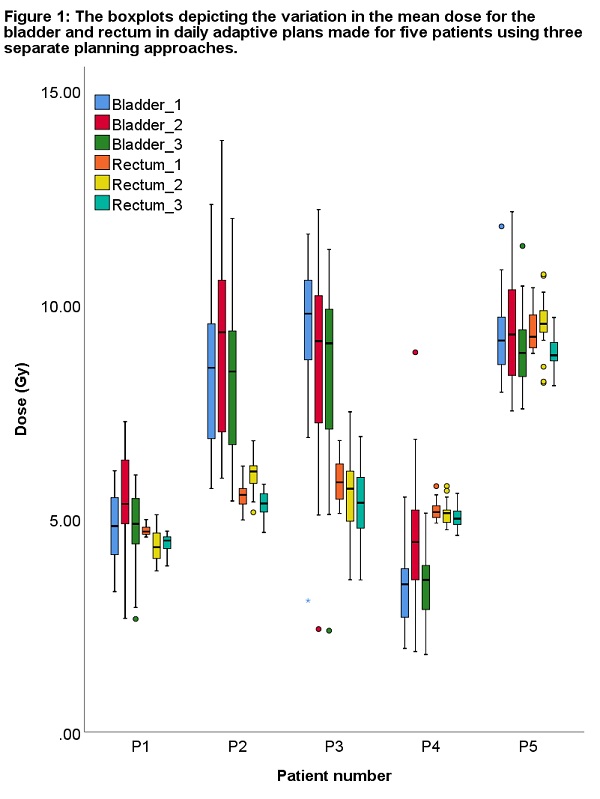The effect of different optimization function templates on daily online adaptive proton planning
Suryakant Kaushik,
Sweden
PO-1861
Abstract
The effect of different optimization function templates on daily online adaptive proton planning
Authors: Suryakant Kaushik1,2, Iuliana Toma Dasu2,3, Albin Fredriksson1, Jakob Oden1
1RaySearch Laboratories AB, Research and development, Stockholm, Sweden; 2Stockholm University, Physics and Medical Radiation Physics, Stockholm, Sweden; 3Karolinska Institutet, Medical Radiation Physics, Stockholm, Sweden
Show Affiliations
Hide Affiliations
Purpose or Objective
As a time-saving approach in daily adaptive proton planning, one usually uses the same objective functions and weights each day which might be sub-optimal considering the anatomy and OAR volume changes. Combining multiple optimization function types for the same OAR may counteract the limitations of an individual function type over the treatment course. This study aims to compare the performance of three planning approaches, two involving single and one multiple optimization function types for the same OAR, in online adaptive proton therapy.
Material and Methods
Three robustly optimized (3.5%,3mm) plans, aiming at delivering 68 Gy (RBE-weighted dose using RBE=1.1) in 25 fractions to the CTV (clinical goal V95%>99%), were made in RayStation v12A for a sample group consisting of five low-risk prostate cancer patients. The optimization function types for the OARs for the three plans were: (1) max EUD function (plan_1), (2) dose gradient function (plan_2), and (3) max EUD and dose gradient functions with the weights determined from plan_1 and plan_2 (plan_3), such that all three approaches have similar OAR mean doses. A fictive ring structure around the CTV was used to guide the optimization in all plans. The nominal plans optimized on the planning CT (pCT) were recalculated for each patient on a set of virtual CTs (vCTs) obtained from the daily CBCTs. For each patient, the treatment plans were examined separately, and the findings were presented as an average across all fractions without dose accumulation.
Results
All plans fulfilled the clinical CTV goal (Table 1). The nominal plan_3 took an additional minute to plan compared to the nominal plan_1 and plan_2 since it required input of function weights from them. There was no time difference in adaptive planning, however. The mean OAR dose in plan_3 was either the lowest or comparable to the minimum of plan_1 or plan_2. Plan_1 and plan_2 reduced the OAR dose differently depending on the OAR’s volume variation over the fractions (Figure 1). The max EUD function in plan_1 typically worked better than the dose gradient function in plan_2 in the case where the OAR volume in vCT was smaller compared to pCT and vice-versa. Overall, plan_3 resulted in lower mean doses regardless of OAR volume changes. It should be noted that the CTV V98% in plan_3 was reduced to achieve 95% dose coverage in the OAR overlap region with the intended objective of toxicity reduction since the overlapping region of OAR and CTV changed daily.


Conclusion
The three planning approaches result in similar CTV coverage with respect to V95%. However, combining two optimization function types for the OAR, as in plan_3, resulted in a lower mean dose over all the treatment fractions combined. Additional time spent on multiple plans on the pCT can benefit online plan adaptation by saving time during treatment and reducing OAR doses.